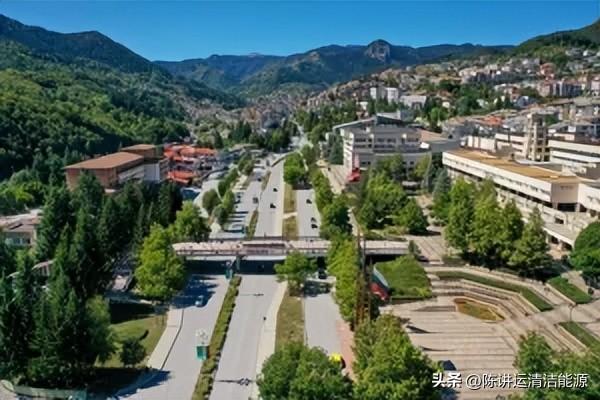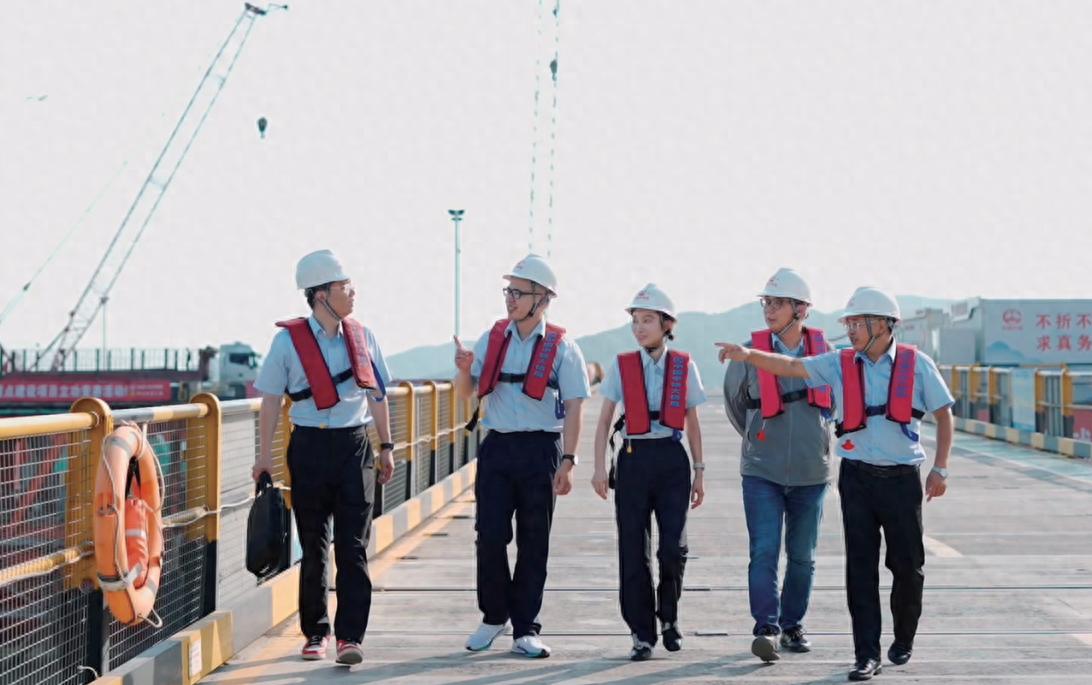
保加利亚斯莫梁市正逐步成为一个充满活力的城市
2023 年 10 月初,欧盟项目 +CityxChange 在挪威特隆赫姆市举行了最后一次会议,结束了。自启动以来,特隆赫姆(挪威)和利默里克(爱尔兰)这两个灯塔城市,以及它们所谓的追随者城市阿尔巴尤利亚(罗马尼亚)、皮塞克(捷克共和国)、沃鲁(爱沙尼亚)、斯莫梁(保加利亚)和塞斯陶(西班牙),探索了创建正能量区(PEB)和正能量区(PED)的可能性。根据定义,PEB/PEDs“由几座新建或翻新的建筑组成,这些建筑积极管理其能源消耗和流向周围能源系统的能量流,以实现正能量平衡”。照片:斯莫梁市
除可再生能源外,PEB/PED还使用生态生物基材料和本地存储选项。总体意图是将它们结合起来,形成智能的电力、供暖和制冷网络,以符合所谓的“大胆城市愿景”,旨在实现气候中和,并为到 2050 年建立欧洲正能量城市网络铺平道路。当然,这是一个雄心勃勃的目标,可以预期将使用太阳能热能来实现它。然而,根据+CityxChange项目经理Dirk Ahlers的说法,情况并非如此。
“在+CityxChange的框架内,我们没有任何特定的太阳能热电厂,尽管它们可以在各个城市用于建筑物的翻新或新建筑物。这取决于当地条件和可行性研究。该项目使用一些连接了大型热泵的建筑物,“Ahlers说。至少他承认,“热能是整体PED发展和减排的重要能源方面,该项目还研究了电力和热能使用之间的部门耦合。
地方当局的良好做法和知识
保加利亚城市斯莫良位于罗多彼山脉,距离希腊边境不远,至少是一个+CityxChange的追随者城市,利用太阳能热能制造PEB / PED,尽管目前规模不大。斯莫良的+CityxChange项目协调员Eftima Petkova告诉 Solarthermalworld.org,它对+CityxChange的参与为Smolyan带来了“良好的实践和大量的知识,并提高了我们作为地方当局的能力,为城市的可持续发展而努力”。
根据佩特科娃的说法,作为追随者城市,斯莫梁选择在示范区工作,其中包括市政游泳池和体育馆的建筑,这两座建筑都在2015年进行了翻新,成为现代功能性体育设施。体育馆进行了隔热,并在平坦的屋顶上安装了新的供暖和通风系统,包括两个颗粒锅炉和六个太阳能集热器。此外,游泳池的建筑是隔热的,并由生物质锅炉加热。生物质锅炉与太阳能集热器一起满足了游泳池的热水需求。两栋建筑的照明都是基于LED的。

保加利亚斯莫梁市已经认识到,这需要在规划、与所有利益相关者合作以及创造必要的监管、社会和经济条件方面做出系统的努力,以实现正能量街区和地区。照片:斯莫梁市
此外,该市目前正在实施一个名为“适应气候变化伙伴关系”的项目。它为在两座建筑物上进一步安装可再生能源系统的示范措施提供资金,再次在体育馆的屋顶安装用于发电和自用的光伏电池板,以及将光伏和太阳能热能相结合用于发电和供热的PVT模块。这将显著提高两座建筑的能源性能。
在伙伴关系项目中,斯莫梁市正在与保加利亚其他三个城市阿塞诺夫格勒、斯维伦格勒和克鲁沙里、保加利亚昴宿星团工程公司以及特隆赫姆科技大学合作。佩特科娃说:“该项目正在进行中,并设想为每个参与城市的关键建筑物安装可再生能源系统提供资金,并在选定的建筑物中实施能源消耗和发电试点能源监测系统。
她还报告说,去年12月,斯莫梁成为欧洲城市设施(EUCF)的受益者。这将使罗多彼镇能够将其+CityxChange PEB概念扩展到该市的行政中心及其公共建筑和区域文化综合体,包括剧院,图书馆,博物馆和艺术画廊以及周围的住宅区。佩特科娃解释说:“我们正在研究投资可能性,以在该市境内的大量公共和住宅建筑中引入能源效率措施和可再生能源,如光伏和太阳能热能。
她总结说,作为+CityxChange项目的追随者,斯莫梁 “已经学会了如何在一个需要系统努力的过程中实现正能量街区和地区,这需要在规划、与所有利益相关者的合作以及创造必要的监管、社会和经济条件方面做出系统的努力”。市议会批准的 2050 年可持续发展大胆城市愿景阐明了其长期且非常雄心勃勃的目标,即以可持续的方式发展城市,并最终“将斯莫梁转变为一个能源积极的城市”,因为它承认它“符合当地需求、国家和国际目标,并反映了斯莫梁市民对其城镇未来的愿景,即清洁、 绿色、面向未来、市民友好的城市”。编译 陈讲运

Step by step, the Bulgarian city of Smolyan is aiming to become an energy-positive city
At the beginning of October 2023, the EU project +CityxChange came to an end with a final conference in the Norwegian city of Trondheim. Since its launch, the two lighthouse cities Trondheim (Norway) and Limerick (Ireland), together with their so-called follower cities Alba Iulia (Romania), Pisek (Czech Republic), Võru (Estonia), Smolyan (Bulgaria) and Sestao (Spain), have explored possibilities for the creation of Positive Energy Blocks (PEBs) and Positive Energy Districts (PEDs). By definition, PEBs/PEDs “consist of several new or renovated buildings that actively manage their energy consumption and the energy flow to the surrounding energy system to achieve a positive energy balance”. Photo: City of Smolyan
In addition to renewable energies, ecological bio-based materials and local storage options are also used for PEBs/PEDs. The overall intention is to combine them to form intelligent electricity, heating and cooling networks that fit into a so-called Bold City Vision aiming at climate neutrality and paving the way towards a European network of positive-energy cities by 2050. This is, of course, an ambitious target and it could be expected that solar thermal energy would be used to achieve it. However, according to +CityxChange Project Manager Dirk Ahlers this is not directly the case.
“Within the framework of +CityxChange, we do not have any specific solar thermal plants, although they can be used in the individual cities in the renovation of buildings or in new buildings. This depends on local conditions and feasibility studies. The project uses some buildings with larger heat pumps connected,” said Ahlers. At least he admits that “thermal energy is an important energy aspect for overall PED development and emission reduction, and the project also investigates sector coupling between electricity and thermal energy use.”
Good practices and knowledge for local authorities
The Bulgarian city of Smolyan, situated in the Rhodope Mountains, not far from the Greek border, is at least one +CityxChange follower city utilizing solar thermal energy to create PEBs/PEDs, albeit on a modest scale for the time being. Eftima Petkova, Smolyan’s +CityxChange Project Coordinator, told Solarthermalworld.org that its participation in +CityxChange has brought Smolyan “good practices and a lot of knowledge, and has increased our capacity as a local authority to work towards the city’s sustainable development”.
According to Petkova, as a follower city Smolyan has chosen to work on a demonstration area that includes the buildings of the municipal swimming pool and sports hall, which were both renovated in 2015 as modern functional sports facilities. The sports hall was insulated and received a new heating and ventilation system with two pellet boilers and six solar thermal collectors on the flat rooftop. Also, the building of the swimming pool was insulated and is heated by a biomass boiler. The biomass boiler, together with the solar thermal collectors, covers the hot water demand for the swimming pool. The lighting in both buildings is LED-based.

The City of Smolyan in Bulgaria has understood that it requires systematic efforts in terms of planning, cooperation with all stakeholders and the creation of the necessary regulatory, social and economic conditions to achieve positive energy blocks and districts. Photo: City of Smolyan
Additionally, the municipality is currently implementing a project named Partnership for Adaptation to Climate Change. It provides financing for demonstration measures for further instalment of renewable energy systems on both buildings, again an installation of photovoltaic panels for power production and self-consumption on the roof of the sports hall and PVT modules, which combine photovoltaics and solar thermal energy for power and heat production. This will improve the energy performance of both buildings significantly.
In the Partnership project the city of Smolyan is cooperating with the three other Bulgarian municipalities Asenovgrad, Svilengrad and Krushari and the engineering company Pleiades Bulgaria as well as the University for Science and Technology in Trondheim. “This project is ongoing and envisages financing the installation of renewable energy systems in key buildings in each of the participating municipalities as well as the implementation of a pilot energy monitoring system for energy consumption and generation in the selected buildings,” said Petkova.
She also reported that last December Smolyan became a beneficiary of the European City Facility (EUCF). This will enable the town of Rhodope to expand its +CityxChange PEB concept to the city’s administrative centre with its public buildings and the regional cultural complex with its theatre, library, museum and art gallery and the surrounding residential area. “We are examining investment possibilities to introduce energy efficiency measures and renewable energies like PV and solar thermal in a large number of public and residential buildings on the city’s territory”, Petkova explained.
She summarized that as a follower city of the +CityxChange project Smolyan “has learned how to achieve positive energy blocks and districts in a process that requires systematic efforts in terms of planning, cooperation with all stakeholders and the creation of the necessary regulatory, social and economic conditions”. The Bold City Vision 2050 for sustainable development approved by the municipality council states its long-term and very ambitious goal to develop the city in a sustainable way and ultimately to “transform Smolyan into an energy-positive city” because it acknowledges it as “in line with local needs, national and international objectives and reflects the vision of the citizens of Smolyan for the future of their town as a clean, green and future-proof, citizen-friendly city”.

限 时 特 惠: 本站每日持续更新海量各大内部创业教程,一年会员只需98元,全站资源免费下载 点击查看详情
站 长 微 信: lzxmw777





